#Helarctos malayanus
Text
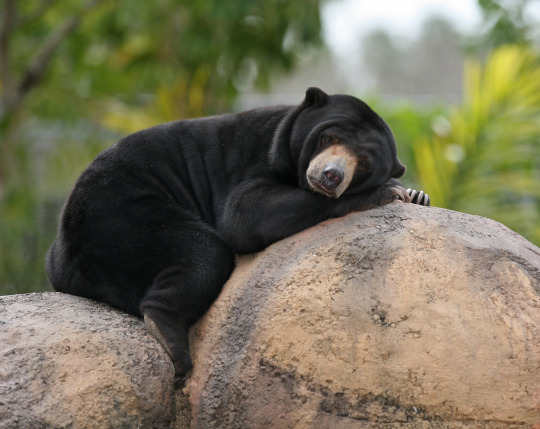
Good Friday, pals! You've been gifted a sleepy sun bear for your Friday morning. (Or afternoon, or perhaps it's already the weekend, wherever you are.)
You made it to the end of the week. We're glad you're here with us.
- - - - - - - -
"Malaysian Sun Bear" by BirdPhotos.com is licensed under CC BY 3.0.
#bear#friday#friday bear#fridaybear#sun bear#Helarctos malayanus#cute#animals#nature#wildlife#photography#outdoors#wildness#sun#sun bear sunning
634 notes
·
View notes
Text
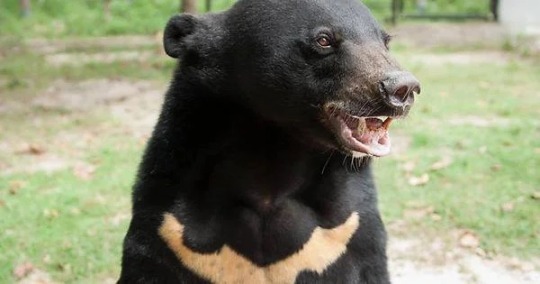
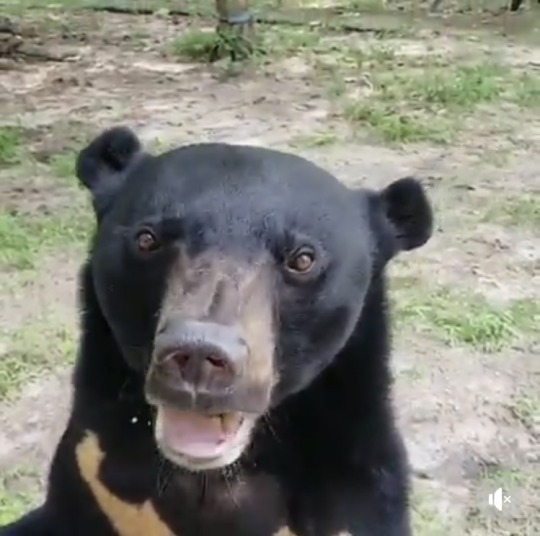


Sun bear (Helarctos malayanus) x Moon bear (Ursus thibetanus) hybrid
Sun and moon bear for comparison
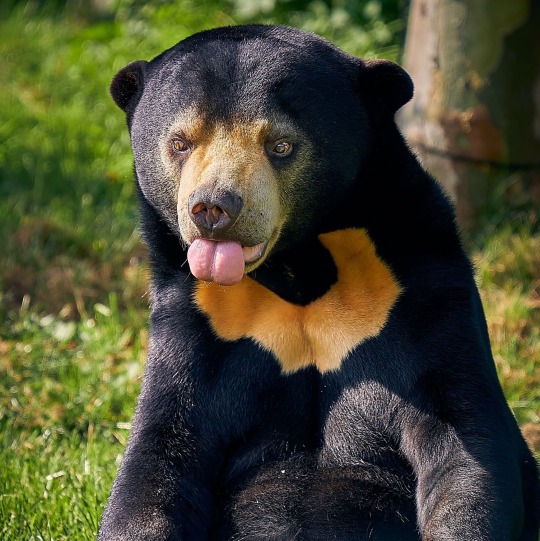

@ free the bears
#hybrid#sun bear#Helarctos malayanus#moon bear#asiatic black bear#Ursus thibetanus#bear#mammal#they could potentially have the coolest name#sun moon bear?#celestial bear?#the possibilities#his name is Tom Tom
550 notes
·
View notes
Photo

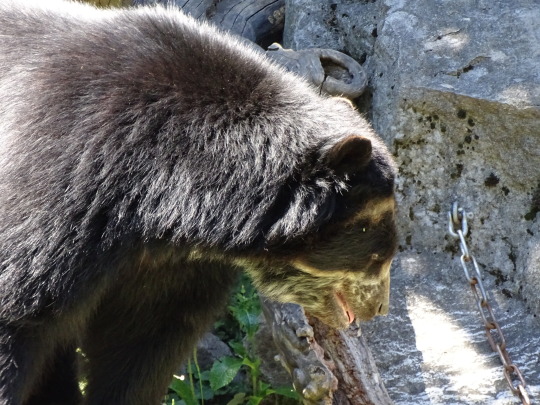





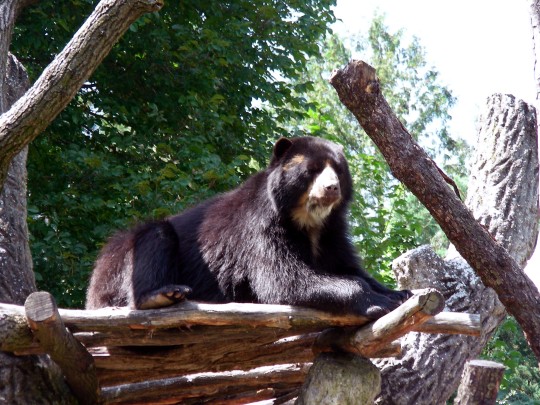
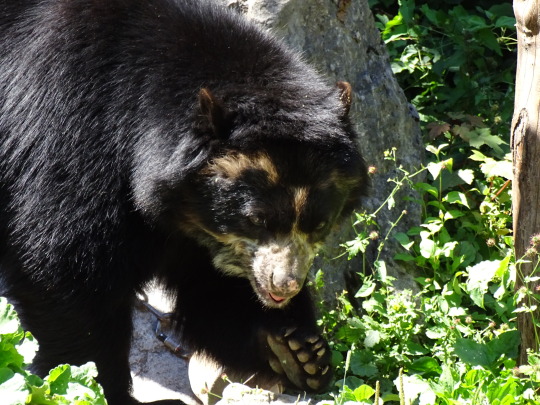

National Black Bear Day
It’s a ‘beary’ good day to celebrate National Black Bear Day on June 4 this year, which has been observed each year on the first Saturday in June for the sole pur-‘paws’ of teaching people about black bears and dispelling the myths surrounding them. This was the last pun, we promise. Just bear with us.
History of National Black Bear Day
Bears inhabited practically every continent when humans first made their way to North America. The grizzlies actually thrived in all western states, from Mexico to the tip of Alaska. The smaller black bear, a relative to the grizzly, was living in places as far-ranging as the Atlantic and the Pacific in North America, and Mexico to the northern edge of the continent. Since the black bear was a valuable source of thick hides for clothing and shelter, rich meat, and sweet fat for the Native Americans, we can see why they valued it and passed on the stories of these bears through their oral folktales.
The European settlers brought with them their fear of the wild and the animals that lived in it. These bears posed a threat to life, livestock, and crops and so they began killing them. Their fear made its way into popular children’s books at the time, which showed bears attacking hunters alongside other predators preying on their cattle. As is common with a human presence, forest land was wiped out to make space for open farmland, and the bears began losing their homes. The more the population expanded, the more black bears were killed for safety, food, or other purposes. Because they reproduced much slower than other mammals, the black bear population began to dwindle.
However, restoration programs and recovery of forest land saw their numbers go up again, with some states like New Jersey and Maryland reporting a five-fold increase. While these bears have not been able to reclaim their entire territory across North America, there is still a good number of black bears in the wild. In fact, they are listed as the least endangered species by the International Union for Conservation of Nature due to their large population. While the bear population is expanding, so is the human population, to the extent that the two are coexisting in many areas.
The North Carolina Black Bear Festival founded National Black Bear Day to celebrate America’s black bear while trying to raise awareness about this animal and dispel all the myths and fear surrounding it.
National Black Bear Day timeline
15,000 Years Ago The Humans Arrive
Humans enter North America for the first time — bears are all over the continent at this time.
1492 European Colonization Begins in America
While Norse colonies had already been established in North America, systematic European colonization begins in this year.
1900s Black Bear Numbers are Dwindling
The number of black bears in the wild is reduced to the point of extinction due to an explosion of human populations and habitat loss across America.
Mid-1900s Hunting is Regulated
People begin to recognize the importance of black bears — hunting seasons become heavily controlled or closed altogether and bear restoration programs begin in some states.
1980s–21st Century Black Bear Numbers Recover Rapidly
The black bear population increases 2% a year all over the continent due to reforestation, black bear reintroduction programs, and regulations on hunting black bears.
2002 Residents Like Black Bears
A mail survey done in New York State reveals a majority of residents enjoy having black bears in their state.
2018 Our Day is Here
National Black Bear Day is officially ordained as a celebration to be observed annually.
How To Celebrate National Black Bear Day
Learn more about the American black bear
Take a trip to see black bears
Learn about black bear attacks
National Black Bear Day is your chance to learn more about these magnificent animals and how you can coexist with them respectfully. Humans have a moral responsibility towards the conservation of nature and the animals that need it to survive. Learning more about this day, and the black bear, helps us realize what majestic creatures they are and how we only need to make a few minor adjustments to exist together.
Live near a national park or animal preserve that has a black bear population? Make a field trip out of it and see these animals up close and personal — just not too close. If you can’t physically visit these animals, there are plenty of global reserves and many in America that provide animal cams to view these animals online at any time. Take a minute to observe these cuddly creatures in their natural habitat.
Read up on what to do (and what not to do) in case of a black bear attack. For example, avoid feeding wild bears, don’t run or climb up trees if they chase you, and know that they usually always avoid humans unless they have no choice at all. They aren’t interested in eating humans — their food is 95% plant-based, although they do eat small animals like frogs and fish.
Fun Facts About National Black Bear Day
Bears, bears, everywhere!
Black bears are not always black
They are ‘super hibernators’
They can climb trees
North Carolina has the largest black bears
The black bear can be found in 41 of the 50 U.S. states, at an estimated number of 800,000.
They come in a range of colors, sometimes in the same litter, such as shades of cinnamon, blue/black, blue/grey, and, in rare instances, white.
In northern states, they can hibernate for up to eight months in the spring season but, in the southern regions, they hibernate for a shorter duration or not at all depending on food availability.
These super dexterous animals are sometimes more comfortable on a tree than on the ground.
According to black bear biologist Colleen Olfenbuttel, North Carolina’s coastal regions have the largest black bears on the planet, probably because they have access to high protein crops and enjoy mild winters.
Why We Love National Black Bear Day
We learn about nature’s gifts
It dispels myths about black bears
Avoid accidents
A day dedicated to the black bear is an amazing way to build awareness about this animal, its history, and how our actions impact it. The more we learn, the more we can help to conserve this gift from nature so future generations can enjoy it too.
If you see a black bear today, you shouldn’t scream and run for your life (they can outrun you easily), nor should you be ‘aww-ing’ and walking towards it. National Black Bear Day helps us understand the animals we share our nation with, and reduces our chances of causing damage to ourselves and the bears.
As you’ve read this article, you have probably learned more than you knew yesterday. That makes you more informed about bears than you previously were and, hopefully, wiser in terms of the ways in which to act around them. While this day works towards dispelling the scary myths about these animals, it also helps us avoid bear-related accidents by teaching us common rules to follow in the presence of a black bear.
Source
#Zolli#Zoo Basel#Zoo Zürich#Asian Black Bear#Zurich#daytrip#Ursus thibetanus#white-chested bear#moon bear#flora#fauna#tourist attraction#Sun bear#Helarctos malayanus#National Black Bear Day#first Saturday in June#4 June 2022#NationalBlackBearDay#outdoors#Schweiz#Switzerland#original photography#animal#tree#close up
0 notes
Text
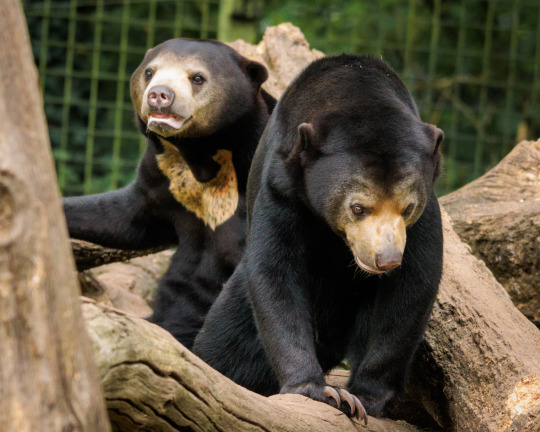


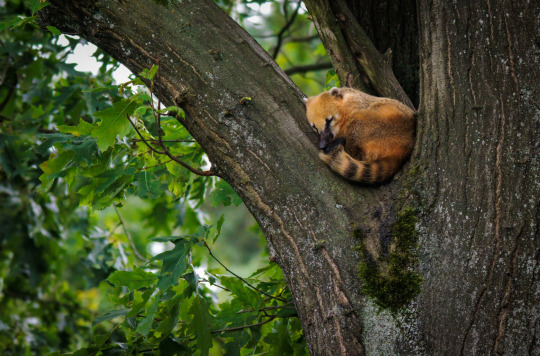
#Burgers#Zoo#BurgersZoo#Burgerszooarnhem#Photography#Photo#Zoophotography#zoo#animal#animals#animalphotography#Sun#Bear#Helarctos#malayanus#sunbear#bears#nasua#South#American#Coati#nasuas#coaties#swampwallaby#wallaby#wallabia#wallabies
15 notes
·
View notes
Text
Carcinization this, carcinization that, what about anteaterization

Southern tamandua (Tamandua tetradactyla, eastern South America): an actual anteater
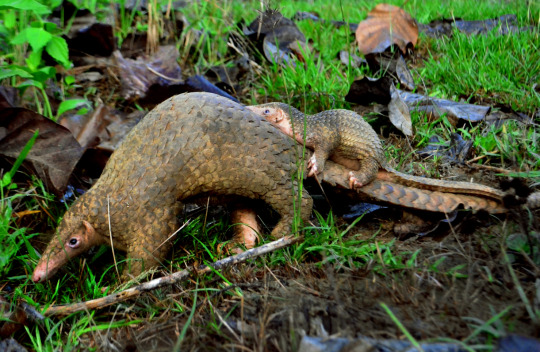
Philippine pangolin (Manis culionensis, Philippines), a loose relative of Carnivorans
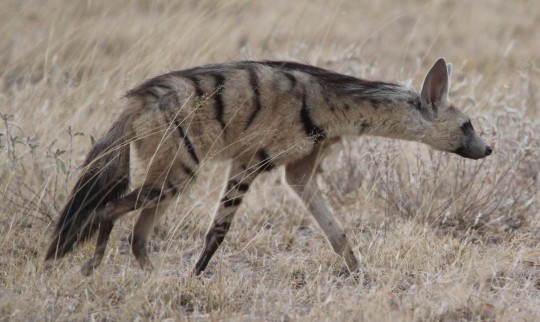
Aardwolf (Proteles cristata, south and east Africa): a hyena

Short-beaked echidna (Tachyglossus aculeatus, Australia): an egg-laying Monotreme, close to the platypus
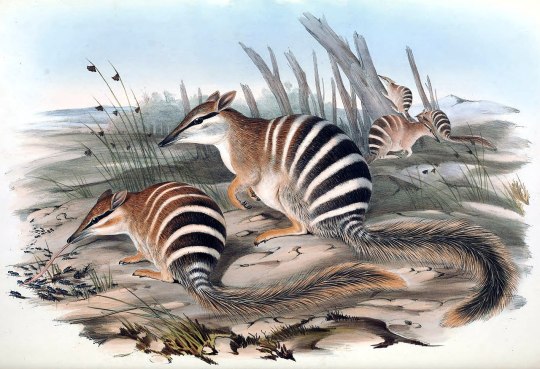
Numbat (Myrmecobis fasciatus, also Australia): a Marsupial

Sun bear (Helarctos malayanus, Southeast Asia): a frickin' bear
807 notes
·
View notes
Text

Sun Bear (Helarctos malayanus), family Ursidae, found in SE Asia
photograph by John Quine
176 notes
·
View notes
Photo
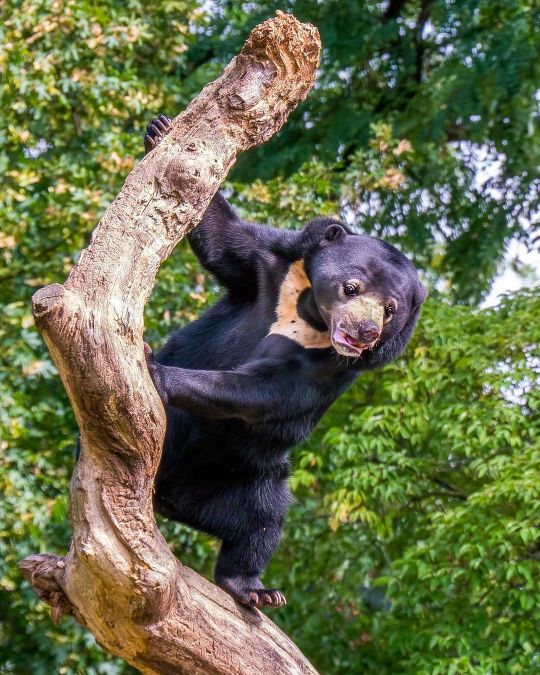
Meet the world’s smallest bear: the sun bear (Helarctos malayanus). Named for the golden patch on its chest, this species typically weighs only around 103 pounds (47 kilograms)—about half the size of an American black bear! The sun bear, which can be found in parts of Southeast Asia, is an excellent climber and uses its long claws to help it move from tree to tree. This bear sometimes even makes nests of branches high in the treetops, where it snoozes up to 128 feet (40 meter) off the ground. Photo: Reinhold Möller, CC BY-SA 4.0, Wikimedia Commons #wildlife #nature #amazingnature #animalkingdom #animalfacts https://www.instagram.com/p/CqWKLLfNGR-/?igshid=NGJjMDIxMWI=
457 notes
·
View notes
Text
141 Bear! Edition
Cause what if 141 were bears?
Including bear facts ! Why? Because bears are cute. 💕
Ghost: Spirit Bear "Kermode Bear"
Ursus americanus kermodei

A subspecies of the American Black Bear that lives exclusively on the coastal shores of British Columbia, Canada.
They are not actually albinos, but instead have a recessive gene that causes the white pigmentation to their fur and eyes. For example, two black 'kermode bears' with the recessive gene can produce a white furred bear.
The white fur is thought to be advantageous towards hunting salmon, as it is theorised that the white colour makes it harder for fish to evade them.
Soap: Sun Bear
Helarctos malayanus
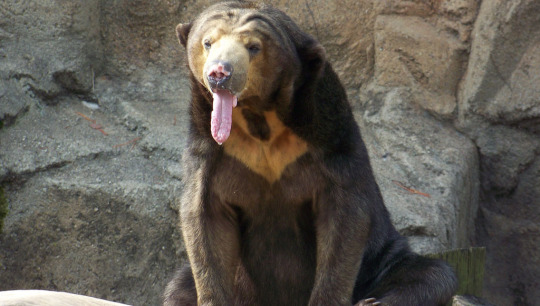
An Asiatic bear that stands as the smallest of all bear species, ranging from northeastern India and extending south to Bangladesh, Myanmar, Thailand, Cambodia, Laos, and Vietnam to Brunei, Indonesia, and Malaysia.
They measure between 4-5 ft from tail to snout and weigh between 55- 145 lbs. It is an excellent climber that is known to be the most arboreal of all bears.
Their name is derived from the orangey- cream colour 'sun' crest on their chest. Another name for them is Honey Bear or beruang madu, in Malay/Indonesian due to their love of feeding on honey combs.
Gaz: Cinnamon Bear
Ursus americanus cinnamomum
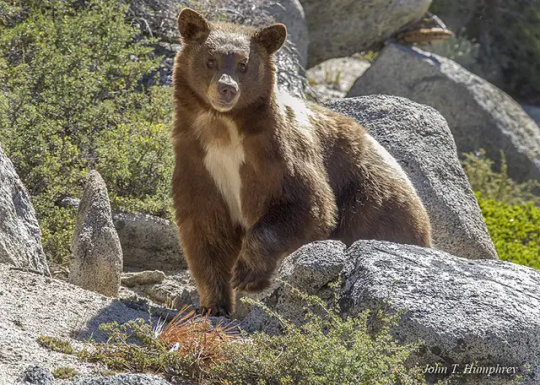
Another subspecies and colour morph of the American Black Bear. It is thought to exist and interbreed with the black coloured American Black Bears.
The name is derived from the brown to red-brown fur colour that resembles cinnamon. It's coat colouration is theorised to be a mimic of grizzly bears who may also cohabit the same areas.
Price: Grizzly Bear "North American Brown Bear"
Ursus arctos horribilis

Despite being known as the 'grizzly bear' or 'grizzly', the bear is categorised as a subspecies or pop. of the Brown Bear, a species that originates in Eurasia. It is thought that this subspecies/pop. migrated to North America between 177,000 BP ~ 111,000 BP.
There are other morphological forms of brown bears in North America also termed as 'grizzly' that were once considered subspecies but is now synonmised with Ursus arctos horribilis, such as the "Kodiak Bear and the "Alaska Peninsular Bear". The 'grizzly bear' historical range starts from Alaska to Mexico, taking in consideration of past subspecies that are now extinct, though it's current population is situated mainly in North America.
It's name came from the descriptor 'grisley' which can be read as 'grizzled' - grey haired, or "grisly" -fearsome, inspiring, though it was formally classified as U. horribilis, for it's terrible character in 1815.
+
*all facts taken from wiki. If there are any mistakes let me know!
#call of duty#cod mwii#cod mwiii#call of duty modern warfare#bears#bear facts#john soap mactavish#captain price#kyle gaz garrick#simon ghost riley#cod mw2
34 notes
·
View notes
Text
Types of Bears:
Black Bears:
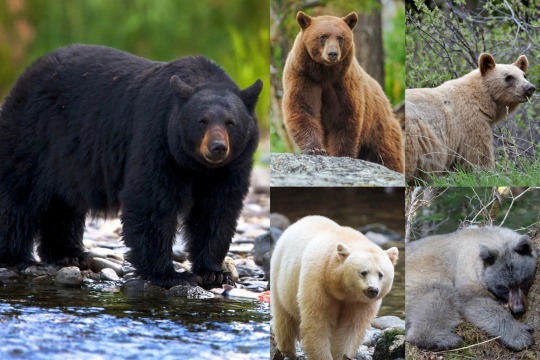
The American Black Bear (Ursus americanus) is a medium-sized bear species native to (you guessed it!) North America. Black Bears can be found in the forests as south as Florida and as North as Alaska. Being so widely distributed it’s no surprise that their population is twice the size of all the other bear species combined! Males generally weigh up to 500lbs, while females weigh up to 300lbs. The heaviest bear on record was found in North Carolina in 1998, weighing in at 880 lbs. Despite what their name may lead you to believe, they actually come in many different colors! They can be cinnamon, blonde, kermode or glacier bears as well as black! These bears are omnivores but their diet varies greatly depending on season, location, etc. They may eat berries, carrion nuts, insect larvae, fish, grasses, and small mammals. Although an adult Black Bear is quite capable of killing a person, they typically avoid any interaction or confrontations with humans. Attempts to relocate American black bears are typically unsuccessful, as the bears are able to return to their home range, even without familiar landscape cues.
Brown Bears:

The Brown Bear (Ursus arctos) is a species of large bear found across North America and Eurasia. In North America, the populations of brown bears are called grizzly bears, while the even larger subspecies that inhabits the Kodiak Islands of Alaska is known as the Kodiak bear. The largest populations are are in Russia with 120,000, the United States with 32,500, and Canada with around 25,000. Males generally weigh up to 600lbs , while females weigh up to 350lbs with the largest Brown Bear on record was a Kodiak that weighed 1,656 lbs. The Brown Bear is omnivorous and has been recorded consuming the greatest variety of foods of any bear. They may eat fish, carrion, insects, fungi, berries, flowers, nuts and small-medium sized mammals. Brown Bears do go out of their way to avoid humans but are much more likely to attack than Black Bears. They are formidable indeed, with females being extremely quick to aggression when with cubs.
Sloth Bear:

The Sloth Bear (Melursus ursinus), also known as the Indian bear, is a medium-sized bear species native to the Indian subcontinent. Their population inhabits the forests and grasslands of India, the Terai of Nepal, Bhutan and Sri Lanka. Males generally weigh up to 380lbs, while females weigh up to 210lbs with the biggest Sloth Bear on record weighing 423 lbs. Sloth Bears are considered myrmecophagous, meaning they feed on ants and termites. It has also been called the “labiated bear" because of its long lower lip and palate used for sucking up insects. They also may eat fruits and flowers. The Sloth Bear is one of the most aggressive bears alive which is likely due to the large human populations living so close to their habitats. These attacks are pretty frequent and if not fatal, the victim is often left terribly disfigured, as the bear strikes at the head and face.
Andean Bear:

The Andean Bear (Tremarctos ornatus) also known as the Spectacled Bear is a species of medium-sized bear native to the Andes Mountains in western South America. It is the only living species of bear native to South America, and the last remaining short-faced bear. Males generally weigh up to 340lbs, while females weigh up to 190 lbs with the largest Andean Bear on record weighing 440 lbs. Andean Bears are omnivores, eating small mammals, birds, and berries with their favorite foods being fruits and bromeliads. There have never been any reported attacks on humans.
Sun Bear:

The Sun Bear (Helarctos malayanus) is a species of small bear native to the tropical forests of Southeast Asia. They can grow up to be 150 lbs with males being 1/3 larger than the females. Sun bears get their name from the characteristic cream coloured chest patch! They are the most arboreal natured of all the bears with long claws fit for climbing trees. They feed omnivorously on insects, berries, fruits and mammals. They do not seem to hibernate, possibly because food resources are available the whole year throughout the range. Sun bears are shy and reclusive animals, and usually do not attack humans unless provoked to do so.
Polar Bear:

The Polar Bear (Ursus maritimus) is a species of large bear native to the Arctic Circle. Males generally weigh up to 1,200lbs, while females weighing up to 700lbs with the largest Polar Bear record weighing 2,209 lbs. Although most polar bears are born on land, they spend most of their time on the sea ice. Their scientific name means "maritime bear" and derives from this fact. Polar Bears are hypercarnivorous feeding primarily on ringed seals, but will also eat bearded seals, harp seals, hooded and harbor seals. Larger prey species such as walrus, narwhal and beluga are occasionally hunted. Due to location, attacks on humans are infrequent but potential chances of survival are very low. “If it’s black: fight back, if it’s brown: lay down, if it’s white: goodnight.”
(I'm experiencing a minor bear hyperfixation, if you can't tell!!! I hope this was beary educational for you ROFLROFLROFL)
#bear#bears#educational#grizzly bear#polar bear#black bear#spirit bear#sun bear#sloth bear#spectacled bear
107 notes
·
View notes
Text
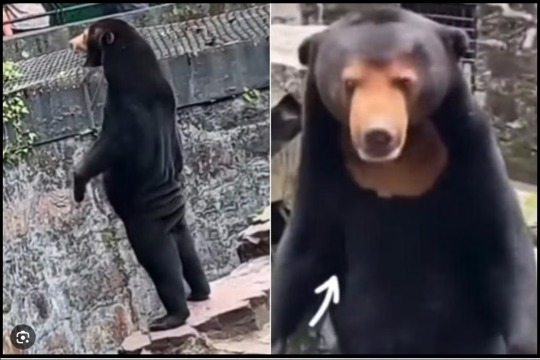
You may have seen the story going round about the alleged 'man in a bear costume' at a zoo in China, & people seem split 50/50 about whether they believe it. Let me assure you, this is 100% real.
This is a Sun Bear (Helarctos malayanus). Sun Bears are the smallest Iiving bear species at up to 65 kg & are native to South East Asia. They're also the most arboreal bear, spending time in trees eating fruit & insects, which is at least part of the reason they're so strangely proportioned & flexible. In a case of convergent evolution, its a bear trying to be an ape, hence the oddly human legs.
Very strange looking indeed, but absolutely a real animal ☀️🐻🌏
34 notes
·
View notes
Note
Why is the scientific name of a bear always start with ursus

WELL TECHNICALLY THERES BEARS THAT DONT START WITH URSUS UHM UHM UHM LIKE UHM PANDAS YES AILUROPODA MELANOLUECA OR SUN BEARS HELARCTOS MALAYANUS PLEASE DO NOT MAKE THE JOKE I KNOW WHAT YOU ARE THINKING WHEN YUO HEAR URSUS ITS NOT PLEASE PLEASE I BEG
10 notes
·
View notes
Text
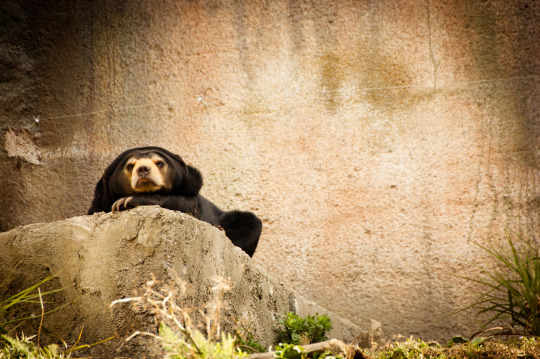
May your Friday be as chill as this sun bear's.
Thanks for hanging with us. We appreciate you.
🤎 🐻 🤎
- - - - - - - - - - - -
"Sun Bear catching some rays" by Colin Bowern is licensed under CC BY 2.0.
#bear#friday#friday bear#fridaybear#sun bear#Helarctos malayanus#cute#animals#nature#wildlife#photography#outdoors#wildness#sun#sun bear sunning#🤎🐻🤎
307 notes
·
View notes
Photo

🔥the variety of chest markings found in Helarctos malayanus
2 notes
·
View notes
Text
Of the eight species of bears, only three species are found in more than five countries, and only two are found in more than eight
The top two are both found in more than double that, with the moon bear in eighteen countries and brown bear in thirty seven
Giant panda (Ailuropoda melanoleuca): China (1)
Black bear (Ursus anericanus): Canada, the US, and Mexico (3)
Polar bear (Ursus maritimus): Greenland, Canada, the US, and Russia (4)
Sloth bear (Melursus ursinus): Sri Lanka, India, Nepal, and Bangladesh (4)
Spectacled bear (Tremarctos ornatus): Colombia, Venezuela, Ecuador, Peru, and Bolivia (5)
Sun bear (Helarctos malayanus): India, Bangladesh, Burma, Thailand, Laos, Kambodia, Vietnam, Indonesia, and Malaysia (8)
Moon bear (Ursus thibetanus): Iran, Afghanistan, Pakistan, India, Nepal, Bhutan, Bangladesh, Burma, Thailand, Laos, Kambodia, Vietnam, Taiwan, China, Russia, North Korea, South Korea, and Japan (18)
Brown bear (Ursus arctos): Spain, France, Italy, Austria, Slovenia, Croatia, Greece, Bulgaria, Romania, Ukraine, Slovakia, Belarus, Latvia, Lithuania, Sweden, Norway, Finland, Russia, Georgia, Azerbaijan, Armenia, Iraq, Iran, Turkmenistan, Kazakhstan, Uzbekistan, Kirjizstan, Tajikistan, Afghanistan, Pakistan, India, Nepal, Bhutan, China, Mongolia, North Korea, and Japan (37)
#original broth#i love bears so fucking mich#brown bear#black bear#moon bear#polar bear#sun bear#sloth bear#spectacled bear#giant panda#bear animal#data
1 note
·
View note
Text
The bees build their massive honeycombs high in the branches of the tree because its huge, columnar trunks are said to be too slippery for the honey-eating Malayan sun bear (Helarctos malayanus) to climb. The nocturnal sun bear, with its long tongue for extracting honey from bee nests, is the smallest, least well-known, and among the rarest of all bear species.
Rare Trees by Sarah Oldfield & Malin Rivers
the smallest saddest obscurest patheticest bear award goes to this poor baby.
0 notes
Text
Bears of India
Bears, our dear Baloo has always been an important part of the childhood stories, cartoon shows, movies and books. Whenever we hear ‘Baloo’ an image of big jolly bear, always trying to save Mowgli from Sher Khan (Bengal Tiger) comes in our mind, but in reality, a bear is one of the most ferocious wild animals, full of strength. Bear are known for their heavy body, thick & dense fur coat, large canines, lumbering gait and protruding lips, they can be found in forests, mountains, tundra, desert and grassy areas.
There are 8 bear species around the world, from the largest one (Brown Bear) found in Alaska to the smallest one (Sun Bear) found in India. In India we have 4 bear species which are, Himalayan black bear, Sloth bear, Sun bear and Himalayan brown bear. Let’s know about them in details.
Himalayan Black Bears
Himalayan black bear (Ursus thibetanus laniger) is a subspecies of Asiatic black bear found in India. They are known as the Moon bear or White Chased bear as it carries a pale yellow or whitish crescent moon shaped patch on the chest. In India they can be seen in Sikkim, Union territory of Jammu and Kashmir, Assam, Arunachal Pradesh and Himalayan regions ranging from a height of 5000 – 12000 feet and their habitat ranges from coniferous forests to alpine meadows.

Black Bears are large omnivorous animals and their diet comprises of meat and fruits such as barriers, apples, acorns, peaches, maize and honey, they also feed on termites. They weight up to 200 kg (Male) and 100 kg (Female), can grow up to the length of 140-170 cm and has the life span around 25 years.
Himalayan Black Bears are categorized as vulnerable species by IUCN due to their low and continuously declining population. At present there are about only 50,000 bears left in the wild, the reason for this downfall includes habitat loss, climate change, hunting & poaching for their body parts, they have a huge demand in Chinese market as their body parts such as paws, skin, and gall bladders are used in traditional Chinese medicine.
There has been an increase in conflict between these bears and humans, specially during the winters when they come down for crops and small animals like sheep, goats, mules etc.
Himalayan Brown Bears
Himalayan Brown Bear (Ursus Arctos) is the heaviest and biggest among all the four bear species found in India, it is one of the 15 sub species of brown bear, which is reddish brown in color and have a thick fur layer. The males can weigh up to 550 kg and the females can weight up to 250 kg, these beasts can reach an average height of 170 cm.
Himalayan brown bear can be found in Jammu & Kashmir, Himachal Pradesh and in norther Uttarakhand. They are omnivorous and they feed on grasses, peaches, roots, insects and small mammals like marmot, they are known to kill the livestock sheep, goat.
A large part of winter is spent by the brown bears in hibernation, where they lower their heart beats to 10 beats per minute, they usually loose 1/3rd of their weight during the whole hibernation.
Himalayan Brown Bears are categorized as endangered species by IUCN and there are about only 500-700 brown bears left in India due to the poaching, hunting climate, habitat loss etc.
Sun Bears

The Sun Bear (Helarctos malayanus) also known as Honey Bear is one of the rarest bear species which can be found only in north-east India. These bears have a short and sleek fur coat which is usually black and sometimes reddish brown or grey. They weight around 35-70 kg and can reach up to a maximum height of 150 cm. They are the smallest bear species in the world and they have the longest tongue among all the bear species. Their distinctive physical feature makes them easy to be spotted in the wild as they carry a patch on their chest, which is usually orange, yellow or white in color.
Talking about their habitat, these bears can be seen only in the tropical evergreen rainforest, specially in the Barak valley. Sun bears are omnivores, their diet includes honey, bee & beetle larvae, termites, ants, and various kind of fruits.
Sun bears are categorized under vulnerable species and there are about only 1000 of them left in the wild. They are being killed and traded for their body parts and for pets. Other factors like habitat fragmentation, deforestation also adds up to the declining sun bear’s population.
Sloth Bears
Sloth bear (Melursus ursinus) is the India’s most widespread and ubiquitous bear species which can be found in the various geographical range of Western Ghats, Uttar Pradesh, West Bengal, Madhya Pradesh and North-East India.
These bears carry very predominant and unique physical features, they have a long muzzle protruding lip, shaggy hair and V shaped patch on chest. The male can weight up to 145 kg and female weights over 55 kg and can grow up to the length of 170 cm.
Sloth bears are myrmecophagous, which means a major portion of their diet consists of termites and ant, besides that they feed on fruits, honey, tubers etc.
Sloth bears are highly aggressive animals and are considered to be the most dangerous wild animal in India as they are known for attacking humans without any provocation, specially when they are with their cubs. These are the only bear species whose cubs can be seen riding on their mother’s back.
They are listed as vulnerable species due to its hunting and poaching for the body parts, specially gall bladder. There are about only 6000-10000 bears left in India, other factors like habitat fragmentation, human wildlife conflict also adds up to the reasons of its declining population. Wildlife SOS did a wonderful job rescuing India’s Dancing Bears, which mostly consisted of this species.
All these four bear species carry one or another special features but one thing is common among them, they all are facing the human threats which is putting tremendous pressure on their population despite being protected under the Indian Wildlife Protection Act 1972, there is need of stricter laws to eliminate illegal trade and habitats conservation.
Written by Adarsh Singh on Think Wildlife Foundation.
Help us Help Them!
Help us Help Them! Think Wildlife Foundation is a non profit organization with various conservation initiatives. Our most prominent campaign is our Caring for Pari intiative. Pari is a rehabilitated elephant at the Wildlife SoS Hospital. 25% of the profits from our store are donated to the elephant hospital for Pari. Other than buying our wonderful merchandise, you could donate directly to our Caring For Pari fundraiser.
0 notes